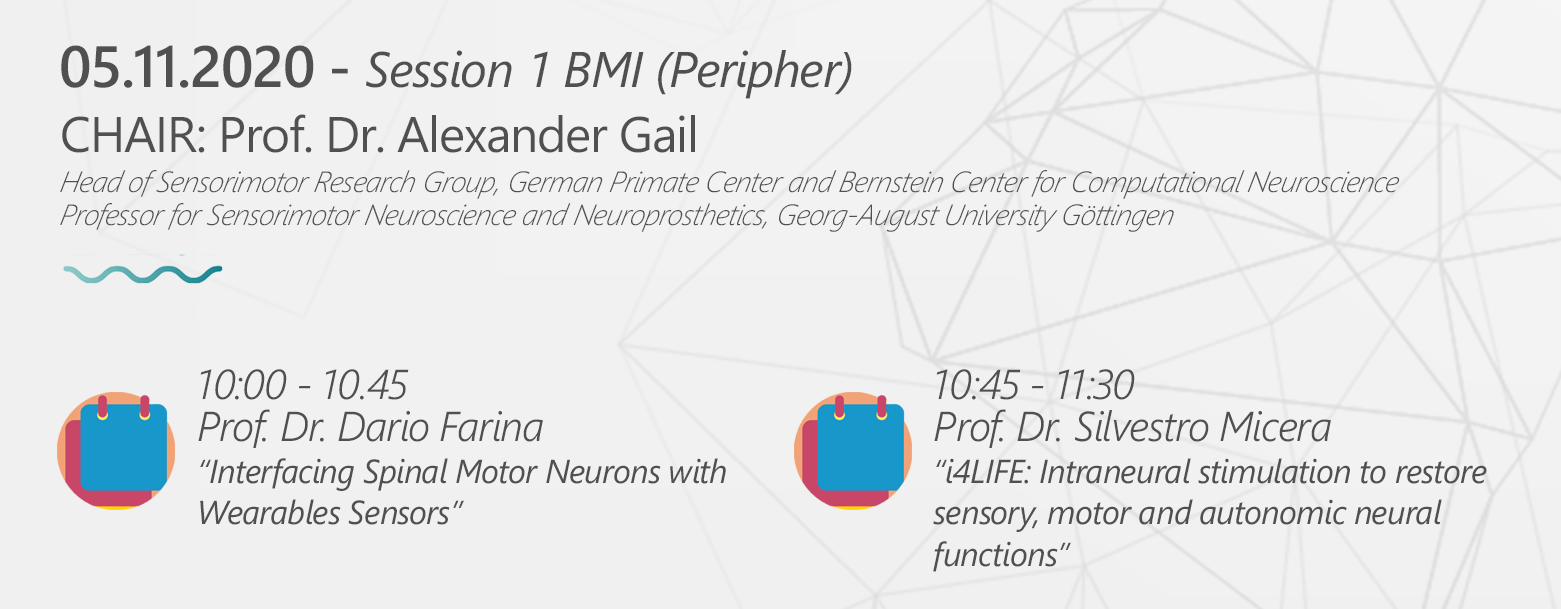
Session 1 - Details

INTERFACING SPINAL MOTOR NEURONS WITH WEARABLE SENSORS
Dario Farina
Alpha motor neurons receive synaptic input that they convert into the ultimate neural code of movement -- the neural drive to muscles. The study of the behaviour of motor neurons provides a window into the neural processing of movement. The spiking activity of motor neurons can be identified from recordings of electrical activity of muscles using wearable sensors. Therefore, motor neurons are the only neural cells whose individual activities can be studied in humans during natural behavior, without the need for surgical implants. The talk will overview the technology for motor neuron interfacing and its potential for neural interfacing in neuroprosthetic applications. Examples of neural interfacing for assistive and rehabilitation devices in patients suffering spinal cord injury and limb amputations will be discussed.
i4LIFE: Intraneural stimulation to restore sensory, motor and autonomic neural functions
Silvestro Micera
Neuroengineering is a novel discipline combining engineering including micro and nanotechnology, electrical and mechanical, and computer science with cellular, molecular, cognitive neuroscience with two main goals: (i) increase our basic knowledge of how the nervous system works; (ii) develop systems able to restore functions in people affected by different types of neural disability.
In the past years, several breakthroughs have been reached by neuroengineers in particular on the development of neurotechnologies able to restore sensorimotor functions in disabled people. Intraneural electrodes represent a potentially very attractive technology for peripheral stimulation for their very good selectivity with limited invasiveness.
In this presentation, I will provide several examples on how implantable intraneural interfaces can be used to restore sensory (tactile feedback for hand prostheses, vision), motor (locomotion and grasping), and autonomic functions (for type 2 diabetes and hearth controls).
Computational Neuroscience Group



